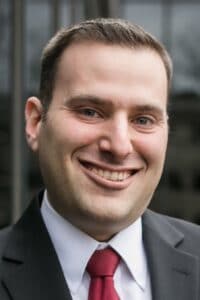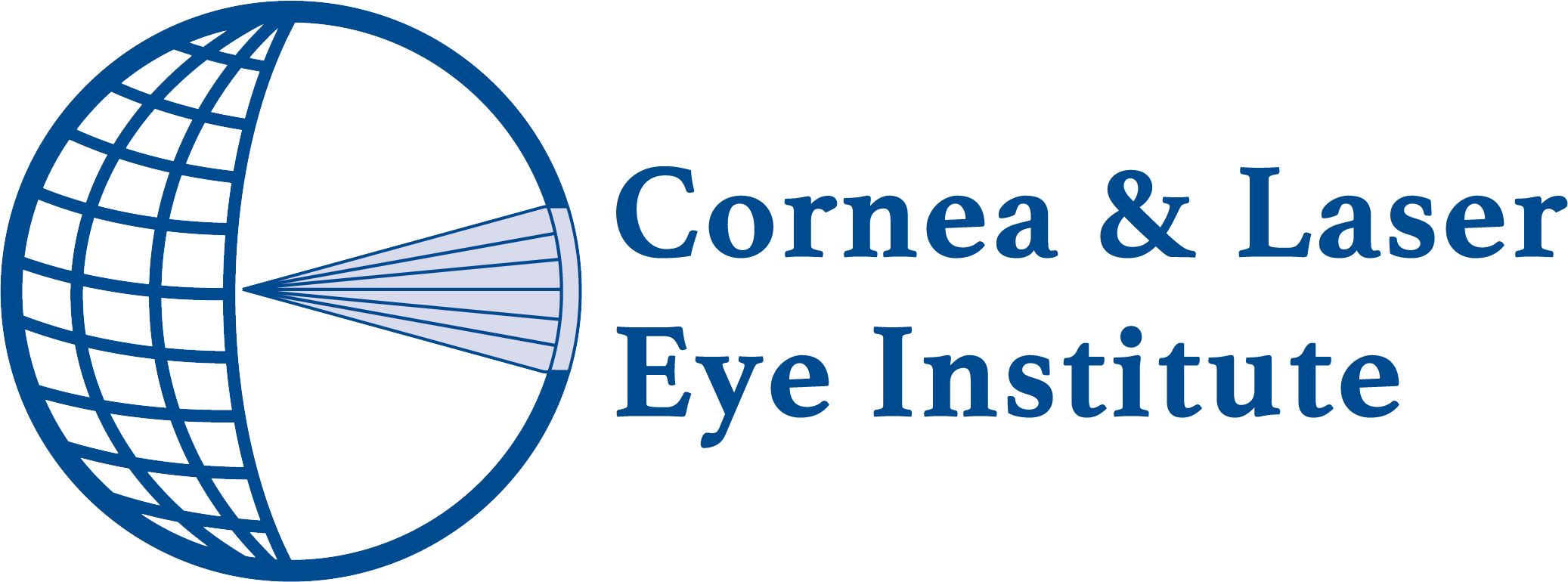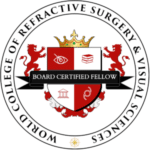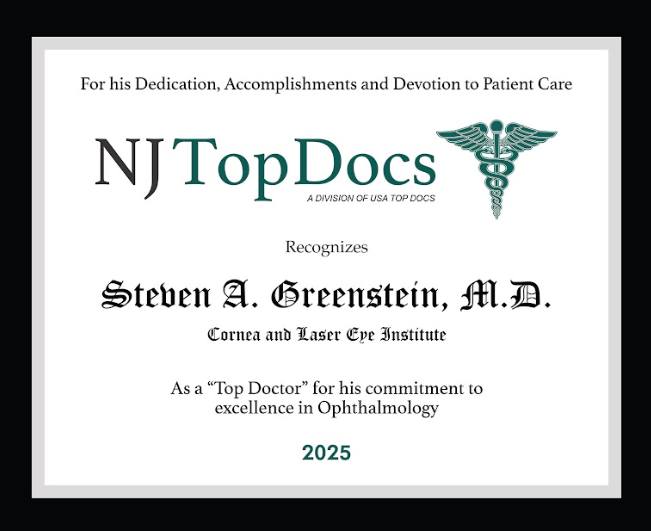
Consistently cited as one of the best LASIK surgeons in the United States and New Jersey—and among the top ophthalmologists nationwide, Dr. Steven A. Greenstein has personally performed more than 10,000 surgical procedures including 1000s of successful LASIK surgeries. Dr. Greenstein is the Medical Director and Director of Refractive Surgery at the Cornea and Laser Eye Institute (CLEI) and its Center for Keratoconus in NJ. Named as 2025 NJ Top Doctor for merit and best ophthalmologist, he is a Harvard-trained corneal specialist who completed the prestigious Cornea, Refractive & External Disease fellowship at Massachusetts Eye and Ear and received the coveted Heed Ophthalmology Fellow Award. A pioneer in corneal surgery, Dr. Greenstein co-invented Corneal Tissue Addition Keratoplasty (CTAK) for keratoconus and is one of the first 700 surgeons worldwide to earn board certification as a Fellow in Refractive Surgery, in addition to being board-certified in Ophthalmology.
Education & Training
Dr. Greenstein received his medical degree from the Albert Einstein College of Medicine where he graduated with a special distinction in clinical research. Dr. Greenstein completed an Internal Medicine Internship, prior to the start of ophthalmology residency training at Rutgers – New Jersey Medical School. Dr. Greenstein completed a one-year pre-residency fellowship at the CLEI Center for Keratoconus, where he concentrated his research on keratoconus and corneal cross-linking. Dr Greenstein has published a multitude of articles in prestigious medical journals, including Cornea and Journal of Cataract and Refractive Surgery, on CLEI’s corneal crosslinking (CXL) clinical trials and on the surgical management of keratoconus and corneal ectasia. In addition to these publications, he has presented at numerous scientific meetings. Dr. Greenstein has written many book chapters, including chapters in Cornea: Fundamentals, Diagnosis, and Management, one of the primary references for cornea surgeons around the world. Dr. Greenstein, with Dr. Gelles and Dr. Hersh, is a co-inventor of Corneal Tissue Addition Keratoplasty (CTAK), a surgical technique to treat Keratoconus.
Ophthalmologist in New Jersey
Dr. Greenstein is board certified in Ophthalmology and is one of the first 700 surgeons worldwide to become a board certified fellow in refractive surgery. Dr. Greenstein is a clinical assistant professor at Rutgers – New Jersey Medical School, where he teaches future eye surgeons about LASIK, and other refractive surgery procedures. He is currently a member of the American Academy of Ophthalmology, American Society of Cataract and Refractive Surgeons, the Refractive Alliance, the Cornea Society, and the Society of Heed Fellows. Dr. Greenstein is also a Team Ophthalmologist for the New York Jets Football team.
Academic & Professional Appointments
Ophthalmologist – The Cornea and Laser Eye Institute, P.A.
Assistant Clinical Professor; Cornea, Refractive & Anterior Segment Surgery – Rutgers NJ Medical School
Team Ophthalmologist for New York Jets Football team
Best Eye Doctor Awards and Recognition
The Alfonse Cinotti Award for Academic and Professional Excellence
The Lions Eye Research Foundation of New Jersey Annual Research Award – 2014, 2015
Rutgers Golden Apple Teaching Award, as nominated by his peers – 2014
2025 NJ Top Docs Award for excellence in commitment to ophthalmology.
Articles and Publications
Cahlon O, Zelefsky MJ, Shippy A, Chan H, Fuks Z, Yamada Y, Hunt M, Greenstein S, Amols H. Ultra-high dose (86.4 Gy) IMRT for localized prostate cancer: toxicity and biochemical outcomes. Int J Radiat Oncol BiolPhys. 2008;71(2):330-337.
Greenstein SA, Fry KL, Bhatt J, Hersh PS. Natural history of corneal haze after collagen crosslinking for keratoconus and corneal ectasia: Scheimpflug and biomicroscopic analysis. J Cataract Refract Surg. 2010;36(12):2105-2114.
Hersh PS, Greenstein SA, Fry KL. Corneal collagen crosslinking for keratoconus and corneal ectasia: one year results of a randomized prospective study. J Cataract Refract Surg. 2011;37(1):149-160.
Greenstein SA, Shah VP, Fry KL, Hersh PS. Corneal thickness changes after corneal collagen crosslinking for keratoconus and corneal ectasia: one-year results. J Cataract Refract Surg. 2011;37(4):691-700.
Greenstein SA, Fry KL, Hersh PS. Corneal topography indices after corneal collagen crosslinking for keratoconus and corneal ectasia: one-year results. J Cataract Refract Surg. 2011;37(7):1282-1290.
Greenstein SA, Fry KL, Hersh PS. In viivo biomechanical changes after corneal collagen crosslinking for keratoconus and corneal ectasia. Cornea. 2012;31(1):21-25.
Greenstein SA, Fry KL, Hersh M, Hersh PS. Higher order aberrations after corneal collagen crosslinking for keratoconus and corneal ectasia. J Cataract Refract Surg. 2012;38(2):292-302.
Brooks NO, Greenstein SA, Fry K, Hersh PS. Patient subjective visual function after corneal collagen crosslinking for keratoconus and corneal ectasia. J Cataract Refract Surg. 2012;38(4):615-619.
Greenstein SA, Fry KL, Hersh PS. The effect of topographic cone location on outcomes of corneal collagen crosslinking for keratoconus and corneal ectasia. J Refract Surg. 2012;28(6):397-405.
Greenstein SA, Hersh PS. Characteristics influencing outcomes of corneal collagen crosslinking for keratoconus and ectasia: implications for patient selection. J Cataract Refract Surg. 2013 Aug; 39(8):1130-40.
Greenstein SA, Pineda R. The Quest for Spectacle Independence: A Comparison of Multifocal Intraocular Lens Implants and Pseudophakic Monovision for Patients with Presbyopia. Seminars in Ophthalmology, 32:1, 111-115, DOI: 10.1080/08820538.2016.1228400.
Guhan S, Peng SL, Janbatian H, Saadeh S, Greenstein SA, Al Bahrani F, Fadlallah A, Tey TC, Melki SA. Surgical adhesives in ophthalmology: history and current trends. Br J Ophthalmol. 2018; March 26.
Nguyen N, Gelles JD, Greenstein SA, Hersh PS. Incidence and associations of intracorneal ring segment explantation. J Cataract Refract Surg. 2018
Greenstein SA, Hersh PS. Advances in Medical and Surgical Cornea. Corneal Collagen Cross-Linking for Keratoconus and Corneal Ectasia. 2015. Chapter 6, 71-87
Hersh PS, Greenstein SA. Foundations of Corneal Disease. Corneal Crosslinking for Keratoconus and Corneal Ectasia. 2020. Chapter 16, 195-205.
Speaking Engagements & Presentation
Dr. Steven Greenstein actively engages in speaking engagements and presentations, focusing on the fields of ophthalmology and vision correction. He is a sought-after speaker at renowned institutions and events, including the International Keratoconus Academy, American Academy of Ophthalmology, and at American Society of Cataract and Refractive Surgery Meetings, Rutgers Ophthalmology Department, the Association for Research in Vision and Ophthalmology, and the International CXL Experts symposium.
Latest Articles by Dr. Steven Greenstein
- Corneal Cross-Linking (CXL) for Keratoconus: What You Need to Know
- Enhance Your Vision with EVO ICL: Lifestyle Benefits and Improvements
- Exploring Alternatives to LASIK
- Coping with Keratoconus: Mental Health and Emotional Well-being
- Driving After Cataract Surgery: When Is It Safe to Get Behind the Wheel?
- Keratoconus and Allergies: Managing Symptoms and Flare-ups
- LASIK for High Prescription? Success Rates and Considerations
- Cataract Surgery Recovery Tips for Seniors
- Preventing Complications: Post-Operative Care for Light Adjustable Lens (LAL) Patients
- Cataract Surgery Complications: Risks and Prevention Strategies





